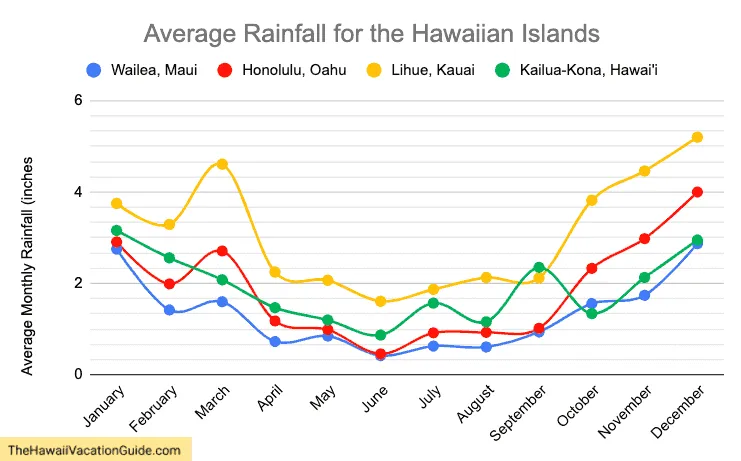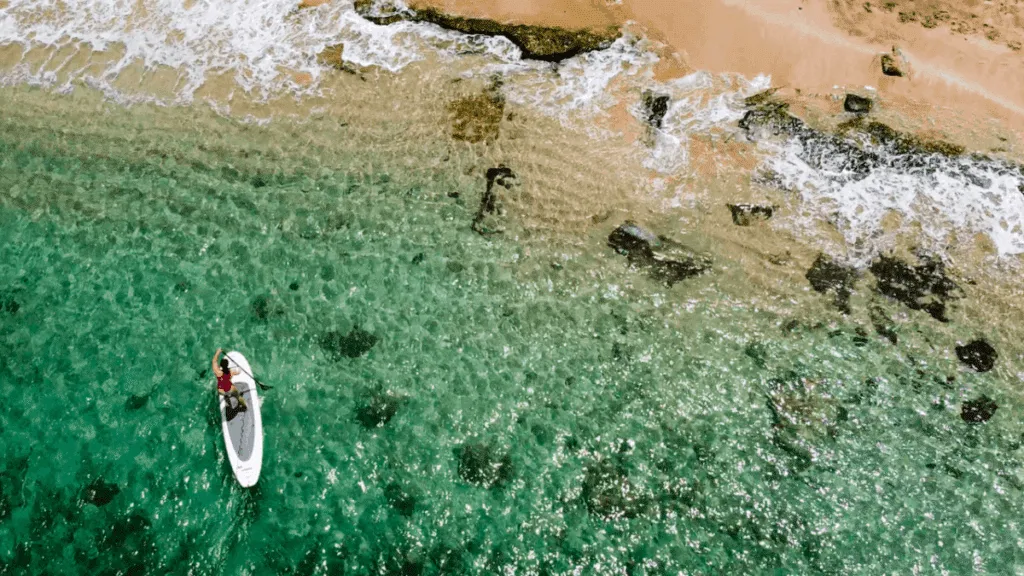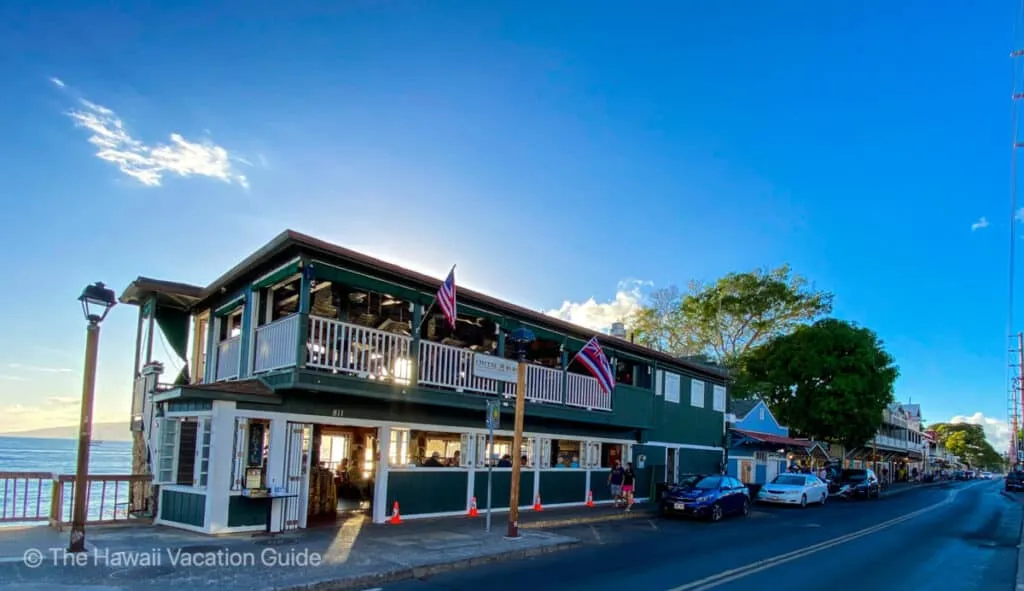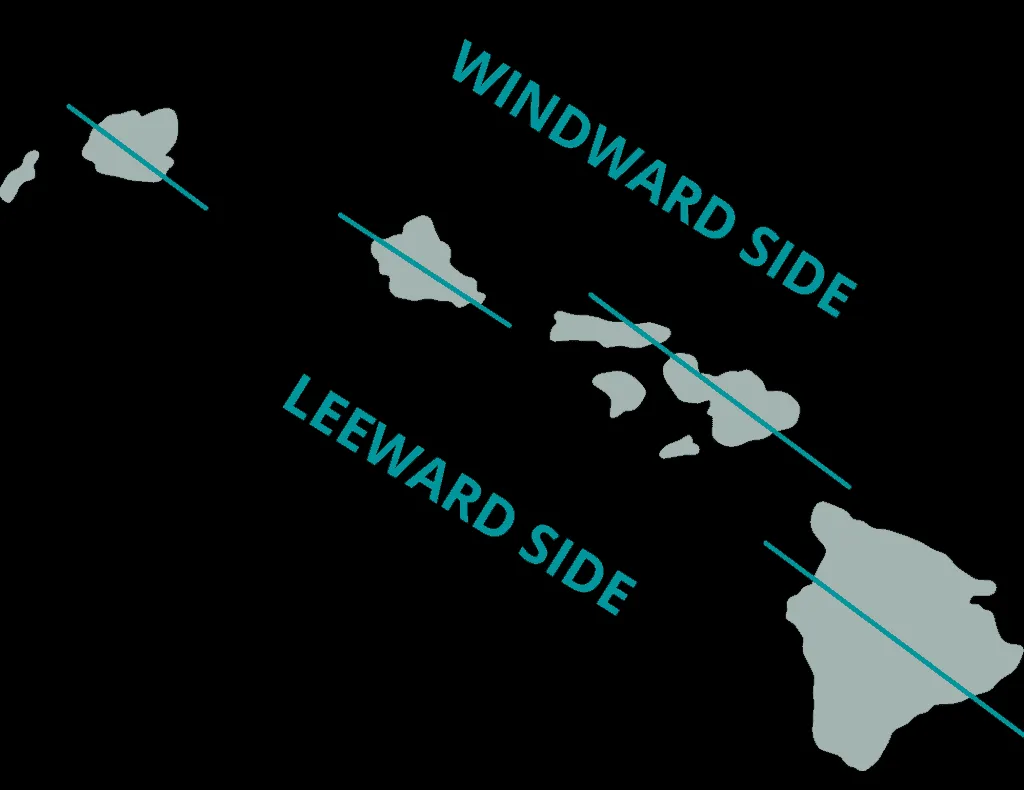Planning a trip to Hawaii in 2025 promises an unforgettable adventure. Known for its stunning beaches, dramatic waterfalls, active volcanoes, and vibrant cultural tapestry, the Hawaiian Islands offer a unique escape. Having spent five years living in Hawaii and now visiting frequently, I’ve gathered essential insights to help you navigate the process and make your Hawaii trip planning smooth and successful, whether you’re a first-timer or returning visitor.
This guide will cover everything you need to know before you go and practical tips for enjoying your time on the islands. We’ll dive into choosing the right island, understanding costs, the best booking strategies, and how to experience the rich culture and incredible nature responsibly.
Hawaii Trip Planning: What to Know Before You Go
Taking the time to plan ahead is crucial for a relaxing and rewarding Hawaiian vacation. From selecting your perfect island to understanding transportation and budgeting, these foundational steps will set the stage for an incredible journey.
1. Can You Visit Maui in 2025?
Yes, absolutely. Maui is open and welcoming visitors in 2025. Following the tragic Lahaina fire in August 2023, there was understandable uncertainty about travel. The Lahaina town area, which holds deep cultural significance, remains closed for rebuilding efforts and is not accessible to visitors.
However, the vast majority of Maui was unaffected by the fire, and other popular visitor areas are fully operational. Supporting the local economy through respectful tourism is vital to the island’s recovery. You can find current information and updates on resources like the Hawaii Tourism Authority website or local news outlets.
2. What island should you visit for Your Hawaii Trip Planning?
Choosing the right Hawaiian island is perhaps the most important decision in your Hawaii trip planning. While all islands offer breathtaking beauty, each has a distinct personality that caters to different travel styles. Considering your interests – whether it’s bustling city life, secluded beaches, adventurous hikes, or volcanic landscapes – will help you make the perfect choice.
Think about the kind of experience you crave. Do you picture yourself hiking rugged coastlines, relaxing on famous beaches, exploring historical sites, or indulging in local cuisine? Your answers will guide you towards the best fit among the major islands: Oahu, Maui, the Big Island, and Kauai.
Here’s a quick guide to help you decide:
- Oahu: Ideal for those seeking a mix of city life, history, surfing, and incredible food. Home to Honolulu, Waikiki Beach, Pearl Harbor, and abundant hiking trails. It offers vibrant nightlife and diverse culinary options.
- Maui: Perfect for beach lovers, snorkelers, and resort enthusiasts. Known for its beautiful beaches like Ka’anapali and Wailea, the scenic Road to Hana, and fantastic opportunities for water activities and whale watching (in season).
- The Big Island (Hawaii Island): Best for adventure seekers and nature enthusiasts drawn to volcanoes, diverse climates, and unique experiences like swimming with manta rays. It boasts active volcanoes at Hawaii Volcanoes National Park and striking black sand beaches.
- Kauai: Great for those who appreciate dramatic natural landscapes, lush greenery, and a slower pace. Famous for the stunning Na Pali Coast, Waimea Canyon, and its focus on outdoor activities like hiking, kayaking, and exploring food trucks.
If you dream of seeing multiple islands, planning for island hopping is certainly possible, though it requires careful coordination. Each inter-island flight adds travel time, typically taking up about half a day of your vacation when accounting for packing, airport procedures, and check-in at the next accommodation.
3. What’s the best time of year for Hawaii Trip Planning?
Honestly, there’s no truly bad time to visit Hawaii, thanks to its tropical climate. However, the “best” time depends on your priorities: weather, cost, and crowds. The islands experience two main seasons: a drier summer (May to October) and a wetter winter (November to April). Trade winds generally keep things comfortable year-round.
For many travelers, the ideal period falls during the shoulder seasons: late April/May and September/October. During these months, you often find a sweet spot with pleasant weather, fewer crowds compared to peak holidays, and potentially better prices on flights and accommodations.
Consider these factors when choosing dates for your Hawaii trip planning:
-

Essential Tips for Your Hawaii Trip Planning Weather: While generally warm year-round, the winter months (Nov-April) see more rainfall, particularly on the windward (northeastern) sides of the islands. The leeward (southwestern) sides are typically drier. If avoiding rain is key, target the summer months or stay on the leeward side.
Hawaii trip planning weather - Prices: Peak travel times, such as Christmas/New Year, President’s Day week, and summer break, see the highest prices for flights and lodging. To save money, aim for the less crowded months like May, September, October, and November (excluding Thanksgiving week). Strategic booking and flexibility can significantly impact your budget.
- Crowds: Avoiding peak tourist seasons means fewer people at popular attractions, beaches, and restaurants. Data from the Hawaii Tourism Authority confirms that February, April, May, September, and October tend to have lower visitor numbers. However, if your interest is specific, like whale watching season (mid-December to mid-April), you’ll need to visit during the busier period.
Ultimately, even visiting during a statistically “worst” time for weather or crowds in Hawaii is often still better than many other destinations!
4. How long should your trip to Hawaii be?
Hawaii is a significant journey for most visitors, especially from the mainland United States. Flights from the West Coast are typically 5-6 hours, with longer travel times from other regions, plus time zone adjustments. A short trip can feel rushed and exhausting.
What to Eat in Fort Worth – A Culinary Deep Dive
11 Must-Visit places to go in nevada for Your 2025 Trip
12 Unforgettable Fun Things to Do in Vegas for Couples
We strongly recommend a minimum of one week for your Hawaii trip planning. This allows enough time to settle in, explore one island without feeling constantly on the go, and experience a variety of activities and sights. You can easily fill a week on a single island, getting a good feel for its distinct offerings.
If you plan to visit multiple islands, your trip should ideally be 10 days or longer. Remember that each inter-island travel day consumes valuable vacation time. For the most relaxing experience, especially on a first visit, dedicating your time to exploring one island deeply is often more rewarding than trying to see too much too quickly.
5. Where should you stay? Hotel or vacation rental for your Hawaii Trip Planning?
Once you’ve selected your island, the next big decision in your Hawaii trip planning is accommodation: hotel or vacation rental (like those found on platforms similar to Airbnb or VRBO). Each option offers different benefits depending on your travel style and group size.
Hotels, particularly resorts, provide amenities like daily housekeeping, on-site restaurants and bars, pools (often elaborate), and concierge services. They offer a traditional vacation experience with less self-sufficiency required. This is great if you want to be pampered and have services readily available.
Vacation rentals often provide more space, privacy, and amenities like full kitchens and laundry facilities, making them ideal for families, groups, or those planning longer stays. Having a kitchen can also help save money on dining out. However, they typically offer fewer on-site services than a full-service hotel.
Luxury resorts like the Westin Ka’anapali on Maui offer extensive amenities and beachfront access, ideal for a pampered stay.
Consider your budget, group size, desire for privacy versus services, and whether you plan to cook some meals when making this choice. Exploring different areas within your chosen island is also key, as locations can vary greatly in atmosphere and accessibility.
6. Do you need a rental car for your Hawaii Trip Planning?
For most visitors, a rental car is highly recommended to fully experience the islands beyond your immediate accommodation area. Public transportation can be limited or infrequent, especially outside major towns, and relying solely on ride-shares can become very expensive.
However, the necessity of a rental car for your entire trip depends largely on your island and where you stay. If you’re doing your Hawaii trip planning for Oahu and staying exclusively in Waikiki, you might only need a car for specific day trips. Waikiki is very walkable, and many tours offer pick-up from Waikiki hotels. Renting a car for just a few days when you plan to explore other parts of Oahu is a common and cost-effective strategy, saving on expensive daily parking fees.
On the outer islands (Maui, Big Island, Kauai), a rental car is almost essential for getting around and seeing the sights efficiently. While limited shuttle services or tours exist, having your own vehicle provides flexibility and access to remote beaches, trailheads, and scenic spots that are difficult to reach otherwise.
Booking your rental car well in advance, ideally right after booking your flight, is crucial due to high demand and fluctuating prices. Comparing prices from different companies is key.
7. How much does a trip to Hawaii cost?
Let’s be upfront: Hawaii is an expensive destination compared to many others. Understanding the potential costs upfront is vital for successful Hawaii trip planning and budgeting. Costs fluctuate significantly based on the time of year you visit, the specific island, your chosen accommodations, activities, and dining habits.
Major expenses include flights, lodging, food, activities, and transportation (rental car/gas or tours). A rough estimate for a family of four for a 10-day trip can easily reach $13,000 or more, encompassing mid-range options for flights, lodging, and activities, plus daily expenses.
Strategies to save money include visiting during the shoulder season, booking flights and lodging early, choosing accommodations with kitchenettes, seeking out affordable local eateries (like food trucks), and prioritizing free activities like hiking and beach days. Utilizing travel points and miles for flights and hotels can also drastically reduce costs.
It’s helpful to research average costs for your specific travel period and island to create a realistic budget. Factor in everything from airport transfers to souvenirs.
8. How far in advance should you book your Hawaii Trip Planning elements?
Booking early is one of the most critical tips for successful Hawaii trip planning, especially if you’re traveling during peak season or have specific activities or accommodations in mind. Waiting too long can lead to limited availability, sold-out tours, and higher prices.
Aim to book the following components of your trip well in advance:
- Flights and Lodging: As soon as you have your dates confirmed, start looking at flights and hotels/vacation rentals. Booking 6-12 months in advance, especially for peak season, is not unreasonable. Prices can fluctuate, but securing something early ensures you have options.
 Hawaii trip planning Maui
Hawaii trip planning Maui - Rental Cars: Book your rental car immediately after booking your flight. Demand often exceeds supply, leading to extremely high prices or unavailability if booked last minute. Look for companies that allow free cancellations, so you can rebook if prices drop closer to your trip.
- Popular Tours and Activities: Highly sought-after experiences, like luaus, specific boat tours (e.g., Na Pali Coast cruises, manta ray night dives), and guided excursions, book up months in advance, particularly during busy periods. If there’s something you absolutely want to do, book it as early as possible, often 2-3 months out.
- Ticketed Entry to Parks/Sights: Some popular natural attractions in Hawaii now require reservations to manage visitor flow and protect resources. Examples include the summit of Haleakala on Maui (for sunrise), Diamond Head on Oahu, and timed entry for certain state parks. Check the official websites for these locations well before your trip and book your slots as soon as the booking window opens.
- Restaurants: If you plan to dine at popular or high-end restaurants, especially those with limited seating or incredible views, make reservations as soon as they open their booking calendar. For some renowned spots, this could be 3-6 months in advance. For others, it might be 30 days. Research the reservation policy for your desired restaurants during your Hawaii trip planning.
 Hawaii Trip Planning restaurants
Hawaii Trip Planning restaurants
Don’t leave critical bookings to the last minute. A little advanced planning goes a long way in ensuring you get the best options and avoid disappointment.
9. How many islands should you visit on your trip to Hawaii?
The question of how many islands to visit is common during Hawaii trip planning. While the islands are relatively close and connected by short flights (typically 30-45 minutes), the process of traveling between them takes time. Packing up, checking out, getting to the airport, flying, picking up transportation on the new island, and checking into new accommodation can easily consume half a day or more.
For a trip of one week (7 days), we strongly recommend sticking to one island. Each island offers incredible diversity and enough activities, sights, and experiences to fill a full week without repeating yourself or feeling bored. Focusing on one island allows for a more relaxed pace and deeper exploration.
If your trip is 10 days or longer, adding a second island becomes more feasible. For example, a 10-day trip could allow 5 days on Oahu and 5 days on Maui, acknowledging that one of those days will be largely dedicated to travel between the islands. For trips of two weeks or more, visiting three or even four islands is possible if you don’t mind a faster pace and multiple travel days. Consider what’s more important: seeing more places briefly or experiencing fewer places more deeply.
Maximizing Your Hawaii Trip: Experiences On-Island
Once your Hawaii trip planning is complete and you’ve arrived, it’s time to fully immerse yourself in the Hawaiian experience. Understanding the local environment, embracing the culture, and seeking unique activities will make your trip truly special.
10. Understand the geography of the islands
Understanding basic Hawaiian geography can significantly enhance your trip. Each island is shaped by its volcanic history and is influenced by prevailing trade winds, creating distinct “windward” and “leeward” sides.
The windward side (generally the northeast side) faces the trade winds. This side receives more rainfall, resulting in lush, green landscapes, dramatic cliffs, and abundant waterfalls. While potentially wetter, this is where you find vibrant rainforests and dramatic natural beauty.
The leeward side (generally the southwest side) is sheltered from the trade winds and is typically drier and sunnier. This side is home to many of the famous golden or white sand beaches, calm waters ideal for swimming and snorkeling, and major resort areas.
 Windward Leeward
Windward Leeward
Knowing the geography helps you plan your activities and pack appropriately. If you’re seeking sunshine and beach time, the leeward side is your primary focus. If you want to explore rainforests and waterfalls, head to the windward side. Be prepared for localized weather changes even on the same island.
11. Eat local food during Your Hawaii Trip Planning
Food is a vital part of any culture, and Hawaii is no exception. Exploring the local culinary scene is an essential and delicious part of an authentic Hawaiian experience. Don’t just stick to familiar foods; dive into the unique flavors influenced by Polynesian, Asian, and American traditions.
Locally sourced ingredients are a highlight. Look for fresh fish caught daily, tropical fruits like pineapple, mango, lilikoi (passion fruit), and unique items grown in the volcanic soil. Farm-to-table restaurants and local markets offer opportunities to taste the bounty of the islands.
Beyond the fresh ingredients, seek out traditional Hawaiian dishes that reflect the islands’ history and heritage. Try kalua pig (slow-roasted pork cooked in an underground oven), laulau (meat and fish wrapped in taro leaves and steamed), or poi (pounded taro paste). These dishes offer a taste of the islands’ past. Poke, a dish of diced raw fish often seasoned with soy sauce, sesame oil, and other ingredients, is incredibly popular and varies widely from place to place. And don’t forget shave ice – a far cry from snow cones, featuring finely shaved ice with flavored syrups and often delicious additions like ice cream or sweetened beans.
12. See the can’t-miss sights in Hawaii
While it’s impossible to see everything in one trip, focusing on some can’t-miss sights will give you a strong sense of Hawaii’s unique beauty and character. These range from iconic natural landmarks to historical sites.
Your list might include famous beaches, significant historical locations, breathtaking viewpoints, and opportunities to witness unique natural phenomena. The best sights often combine natural beauty with a touch of history or cultural significance.
Here are just a few examples to consider for your Hawaii trip planning:
- Hiking to the summit of Diamond Head for panoramic views of Waikiki and the coastline (Oahu).
- Visiting Pearl Harbor to learn about a pivotal moment in history (Oahu).
- Driving the scenic Road to Hana with its countless waterfalls and lush rainforests (Maui).
- Witnessing the sunrise from the summit of Haleakala volcano (Maui).
- Exploring Hawaii Volcanoes National Park to see active volcanoes and dramatic landscapes (Big Island).
- Snorkeling or diving with giant manta rays off the Kona coast (Big Island).
- Taking a boat tour or hike along the stunning Na Pali Coast (Kauai).
- Standing at the rim of Waimea Canyon, often called the “Grand Canyon of the Pacific” (Kauai).
Each island offers its own set of incredible experiences. Researching the highlights of your chosen island will help you prioritize activities based on your interests and available time.
13. Bring the right (reef-safe) sunscreen
This is a crucial, non-negotiable item for your packing list during Hawaii trip planning. To protect the delicate coral reefs and marine life, Hawaii has banned the sale of sunscreens containing oxybenzone and octinoxate, two chemicals harmful to corals.
Before your trip, ensure the sunscreen you pack or plan to buy locally is “reef-safe.” Look for mineral-based sunscreens that use zinc oxide and titanium dioxide as active ingredients. Applying reef-safe sunscreen is a simple yet impactful way you can contribute to preserving Hawaii’s precious marine environment for future generations.
It’s also important to apply sunscreen generously and frequently, especially if you’ll be in the water, as even reef-safe sunscreen can wash off. Covering up with rash guards or seeking shade are additional ways to protect your skin while minimizing the amount of sunscreen needed.
 Best Snorkeling Lahaina Mala Wharf
Best Snorkeling Lahaina Mala Wharf
14. Snorkel to see amazing sea-life
Hawaii’s clear, warm waters are teeming with vibrant marine life, making snorkeling (or diving) a must-do activity for many visitors. From colorful reef fish and sea turtles to octopuses and rays, the underwater world is captivating. However, safety and responsible practices are paramount.
Prioritize Safety: Understand the ocean conditions before entering the water. Check local reports for surf, currents, and visibility. Snorkeling conditions can change rapidly. Never snorkel alone, and be aware of your physical limits. Tragically, drowning is a leading cause of visitor fatalities in Hawaii, often related to snorkeling. Educate yourself on potential risks and safety guidelines provided by local authorities.
Use Quality Gear: While convenient, cheap snorkel gear often fits poorly, leaks, and can be frustrating or even unsafe. Investing in a good quality mask and snorkel that fits your face properly, or renting from a reputable local shop, is highly recommended. Good gear makes the experience far more enjoyable and comfortable. Renting also allows staff to help you find the best fit and provide local tips.
Find the Best Spots: Not all beaches are created equal for snorkeling. Some locations have more vibrant reefs, calmer conditions, or are known gathering spots for certain marine animals. Research the best snorkeling spots on your chosen island based on current conditions and the type of marine life you hope to see. Look for protected bays or coves, especially if you are a beginner.
Consider a Tour: While beach snorkeling is great, a guided boat tour can take you to offshore sites not accessible from land, often with healthier coral and more abundant fish. Tours also provide guides who can point out marine life, explain the ecosystem, and ensure safety. It’s a different perspective that can be well worth it.
Respect Marine Life: Maintain a safe distance from all marine animals. Stay at least 10 feet away from sea turtles (honu) and 50 feet away from Hawaiian Monk Seals, which are endangered. It is illegal to touch or harass marine life. Give dolphins plenty of space. Observe these creatures from a distance to protect them and ensure your own safety.
15. Learn about the culture of the islands
Beyond the beaches and activities, taking time to learn about the rich history and vibrant culture of Hawaii will profoundly enrich your visit. Hawaii has a complex past, from its Polynesian roots and kingdom era to its modern status as a US state. Understanding this heritage fosters respect for the land and its people.
Engage with the local culture in meaningful ways. Visit museums like the Bishop Museum or Iolani Palace on Oahu to delve into Hawaiian history and artifacts. Explore historical sites like Puuhonua o Honaunau National Historical Park on the Big Island, a place of refuge with deep cultural significance. Attend a luau that focuses on authentic cultural performances and history, rather than just entertainment.
Simple efforts like learning a few basic Hawaiian words (“Mahalo” for thank you, “Aloha” for greeting/love/farewell), understanding the significance of traditions, and being mindful of local customs show respect. Supporting local artists, musicians, and businesses is another way to connect with the contemporary culture. Consider volunteering with local conservation or cultural programs for a truly hands-on experience.
Simplifying Your Hawaii Trip Planning
Navigating all the details of a Hawaii trip can seem overwhelming, but with careful planning, you can create the perfect itinerary. Utilizing resources like detailed island guides and step-by-step itineraries can significantly streamline your Hawaii trip planning process.
These resources help you organize bookings, identify must-see sights, plan daily activities efficiently, and discover hidden gems. Many travelers find that having a structured plan allows them to relax and enjoy their vacation more fully, knowing the logistics are covered.
Testimonials from previous users highlight the value of comprehensive planning tools in transforming potentially stressful trip coordination into an exciting part of the journey. They often emphasize how such guides help uncover authentic experiences and efficient ways to explore.
Hawaii Trip Planning FAQs
Here are answers to some common questions people have when planning their trip to Hawaii:
What is the best time to visit Hawaii for good weather and fewer crowds?
The shoulder seasons, typically late April/May and September/October, often offer the best balance of pleasant weather and fewer crowds compared to peak holiday periods.
Do I need a rental car on every Hawaiian island?
While a rental car is highly recommended for exploring the outer islands (Maui, Big Island, Kauai), you may not need one for your entire stay on Oahu, especially if you are staying in Waikiki and plan to use tours or walk for much of your visit.
How far in advance should I book things for my Hawaii trip planning?
For flights, lodging, and rental cars, booking 6-12 months in advance is advisable, particularly for peak seasons. Popular tours, activities, and restaurants should be booked 2-3 months ahead, and required park entries should be reserved as soon as their booking windows open.
Can I visit multiple islands on a one-week trip?
While technically possible via inter-island flights, it’s generally recommended to focus on exploring just one island during a one-week trip to avoid feeling rushed and to maximize your time enjoying the destination rather than traveling between islands.
What kind of sunscreen should I use in Hawaii?
You must use reef-safe sunscreen in Hawaii. Look for mineral-based sunscreens containing zinc oxide and titanium dioxide, avoiding those with oxybenzone and octinoxate.
Careful Hawaii trip planning helps ensure a memorable and enjoyable vacation experience, allowing you to focus on soaking in the beauty and culture of the islands.
